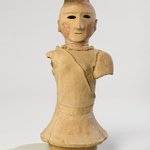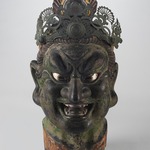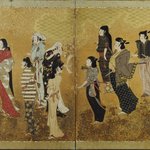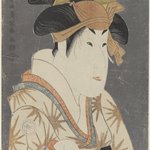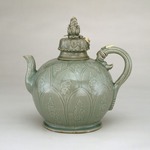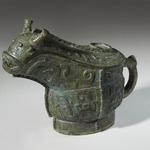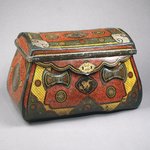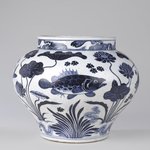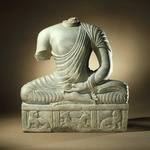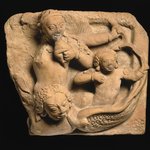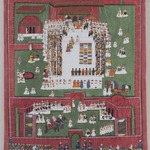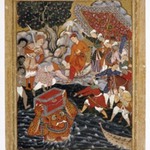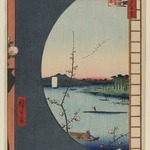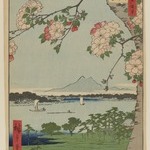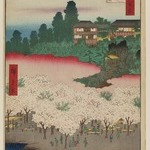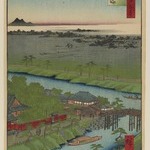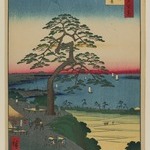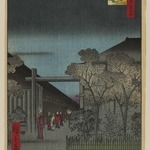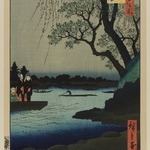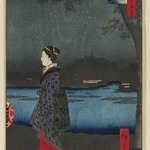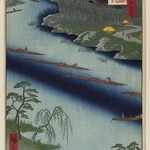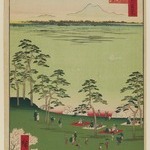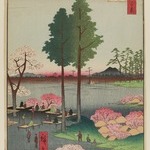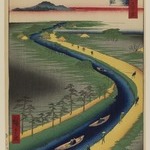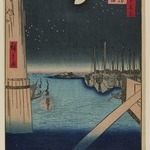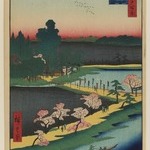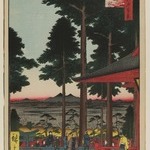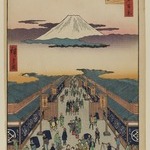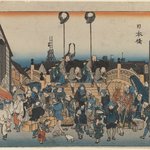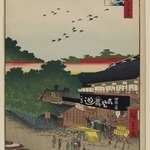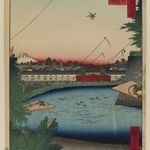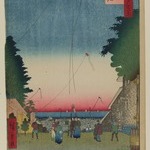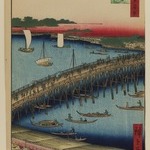Collection: Asian Art
HIGHLIGHTS
FULL COLLECTION
COLLECTION HISTORY
We house one of America's foremost collections of Asian art, representing Japan, Korea, China, India, Southeast Asia, and the Himalayas.
Japanese art comprises the largest area of our Asian collection. More than eight thousand Japanese objects represent a wide range of media and styles, featuring the sacred, imperial, urban, and folk arts from the J?mon period (10,000–300 B.C.E.) to the present day. Celebrated objects in this collection include Buddhist painting and sculpture, early painted screens, woodblock prints, Mingei folk art, and contemporary ceramics. In addition, the Museum holds one of North America's largest and finest collections of indigenous art of the Ainu people of Northern Japan. A recent gift from the estate of Dr. and Mrs. Roger Gerry of nearly three hundred Japanese export ceramics places the entire collection among the most comprehensive in the country.
We hold one of the earliest collections of Korean objects in the United States, making the Museum premier venue for the presentation of Korean art and culture. The collection consists of ceramics, painting, textiles, costumes, furniture, sculpture, metalwork, glass, arms and armor, and other decorative arts from the Neolithic period to the early twentieth century. Highlights include Kory?-dynasty celadons and Korean folk arts. A recent gift from the estate of Dr. and Mrs. Roger Gerry of outstanding celadons and other fine ceramics increased the Museum's collection to about five hundred and fifty objects, making it one of the largest collections of Korean art in the country.
The Chinese holdings include nearly one thousand objects covering more than five thousand years of culture and civilization, from the Neolithic period to the present. A variety of media are represented, including sculpture, painting, textiles, metalwork, and lacquer, with ceramics and decorative arts as particular strengths. Our holdings of cloisonné enamels—many from the Chinese imperial collection—are unparalleled in any institution outside Asia. Key subjects represented include funerary arts related to early Chinese tombs and burials; ritual objects related to ancestor worship, Buddhism, and Daoism; and the arts of the imperial courts and scholar-elites. Our holdings encompass China's rich internal diversity as well as external artistic and cultural connections.
Our vast array of objects from South and Southeast Asia spans more than five thousand years. The collection largely reflects the wide reach of Hinduism and Buddhism, the two religions that originated in the region. Particular strengths include religious figural sculpture from India, Nepal, Tibet, Pakistan, Myanmar (Burma), Thailand, Cambodia, Vietnam, Malaysia, and Indonesia. Secular artistic traditions are also strongly represented in objects from the court of the Islamic Mughal Dynasty of India (1526–1756) as well as terracottas and Kalighat paintings from eastern India. The depth of this collection provides a full sense of the societies, cultures, and artistic traditions in South and Southeast Asia.
Japanese art comprises the largest area of our Asian collection. More than eight thousand Japanese objects represent a wide range of media and styles, featuring the sacred, imperial, urban, and folk arts from the J?mon period (10,000–300 B.C.E.) to the present day. Celebrated objects in this collection include Buddhist painting and sculpture, early painted screens, woodblock prints, Mingei folk art, and contemporary ceramics. In addition, the Museum holds one of North America's largest and finest collections of indigenous art of the Ainu people of Northern Japan. A recent gift from the estate of Dr. and Mrs. Roger Gerry of nearly three hundred Japanese export ceramics places the entire collection among the most comprehensive in the country.
We hold one of the earliest collections of Korean objects in the United States, making the Museum premier venue for the presentation of Korean art and culture. The collection consists of ceramics, painting, textiles, costumes, furniture, sculpture, metalwork, glass, arms and armor, and other decorative arts from the Neolithic period to the early twentieth century. Highlights include Kory?-dynasty celadons and Korean folk arts. A recent gift from the estate of Dr. and Mrs. Roger Gerry of outstanding celadons and other fine ceramics increased the Museum's collection to about five hundred and fifty objects, making it one of the largest collections of Korean art in the country.
The Chinese holdings include nearly one thousand objects covering more than five thousand years of culture and civilization, from the Neolithic period to the present. A variety of media are represented, including sculpture, painting, textiles, metalwork, and lacquer, with ceramics and decorative arts as particular strengths. Our holdings of cloisonné enamels—many from the Chinese imperial collection—are unparalleled in any institution outside Asia. Key subjects represented include funerary arts related to early Chinese tombs and burials; ritual objects related to ancestor worship, Buddhism, and Daoism; and the arts of the imperial courts and scholar-elites. Our holdings encompass China's rich internal diversity as well as external artistic and cultural connections.
Our vast array of objects from South and Southeast Asia spans more than five thousand years. The collection largely reflects the wide reach of Hinduism and Buddhism, the two religions that originated in the region. Particular strengths include religious figural sculpture from India, Nepal, Tibet, Pakistan, Myanmar (Burma), Thailand, Cambodia, Vietnam, Malaysia, and Indonesia. Secular artistic traditions are also strongly represented in objects from the court of the Islamic Mughal Dynasty of India (1526–1756) as well as terracottas and Kalighat paintings from eastern India. The depth of this collection provides a full sense of the societies, cultures, and artistic traditions in South and Southeast Asia.
